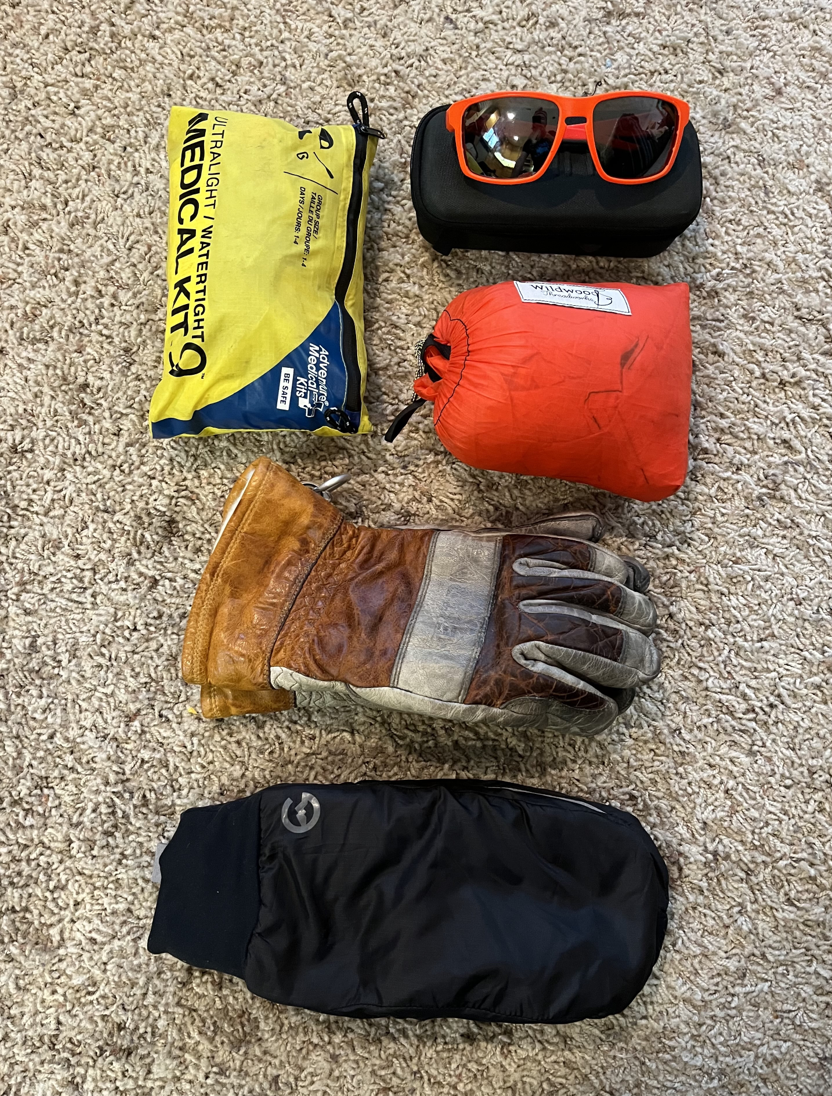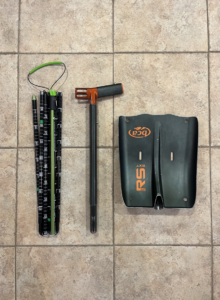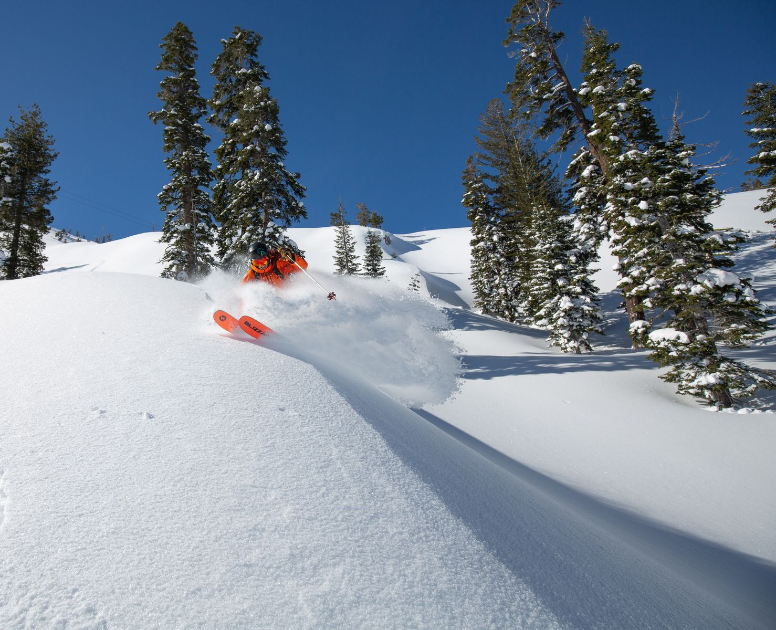What Does A Pro Guide Carry Into the Backcountry?

Alpenglow Expeditions Ski Guide Peter Terwilliger answer the question: What’s In My Ski Pack?
With so much outdoor gear on the scene, it can be hard to know what you need to carry for a day of ski touring and what you don’t. While learning through trial and error can be beneficial in finding out what works, below are the basics of what I carry for a day of skiing as a ski guide, as well as a few things I might bring for a multi-day outing. I like to think about what I carry into the backcountry as my emergency response plan. I want to be prepared for a medical emergency, a worst-case scenario that will potentially force us to spend an unplanned night outdoors. Having pieces that serve multiple functions in our overall kit is the goal.
Backpack
There are multitudes of options for a ski-specific pack. Having a specific pocket for the avalanche rescue tools (shovel/probe) is critical for any ski-touring-specific backpack. I like a rolltop backpack that also has a side zip for easy access. Other features that I appreciate are hip strap pockets for my everyday essentials like sunscreen, ski scraper, Cli bars, etc.
Avalanche rescue Tools
You’ll need a full-sized aluminum avalanche shovel, and there are many different brands making them these days. The biggest differentiation is often the handle shape and shovel blade size. Some of the shovels on the market now also have a different configuration that resembles a hoe and allows for speedy and efficient snow movement. Secondly, I carry an aluminum probe with centimeter marking increments. We recommend a probe length of at least 240 cm minimum, but 280 – 320cm is preferable. Our best recommendation for finding the right one is to visit your local shop and get your hands on these pieces of gear to see what feels the most natural and easy to deploy.
Helmet

For a helmet, we recommend something rated for skiing at a minimum. I find that if I keep a heavy helmet, I seek excuses to not bring it with me. When I own a lightweight helmet, there are no such excuses.
First Aid Kit
A compact first aid kit optimized to treat the most probably injuries: bandages for small cuts and scrapes as well as splints for knee and other joint injuries. For Multi-day adventures, this will likely fluctuate to meet the needs of the group. Generally, only 1 first aid kit is necessary for groups.
Extra Gloves/Mittens
I always carry at a minimum one extra pair of warm gloves, and depending on the weather, I might end up bringing two or three extra pairs. I almost always carry 1 lightweight pair of puffy mittens for emergency uses, as these pack down super light and are rarely used.
Emergency Tarp
I always carry some form of emergency tarp or bivy shelter. This can be a simple nylon tarp that is inexpensive and multi-functional. It can be used as an emergency shelter or, in a pinch, can work to drag an injured person through the snow as an improvised sled. I have been using a lightweight nylon tarp from my friends at Wildwood Threadworks. It packs down small and is highly water-repellent. In addition to the tarp, an ultra-lightweight half-sleeping pad can be an integral piece to an emergency bivy or improvised rescue sled. These can also be used as a dry place to sit, take up very little pack space, and are generally inexpensive.

Extra Sunglasses or Goggles
Depending on the day I will carry a pair of sunglasses and a pair of goggles, or just two pairs of sunglasses. Having backup eye protection is paramount, especially during periods of windy, snowy, and cold conditions. I will only ever bring goggles when it is a period of heavy snow or very cold conditions.
Extra Layers
Being properly prepared on a ski tour means having enough warm layers to last in the cold, which will often be a heavy puffy jacket that you use during breaks. I will usually have one heavy jacket, an insulated vest, and a waterproof shell. Unless the weather is extreme I will tour in separate gear and these pieces will come out for breaks, or in the event of unforeseen circumstances.
Snacks and Hydration
Probably the most obvious one. A healthy amount of quality snacks goes a long way for having a good day in the backcountry. In cold weather, I will put hot water into a Nalgene and wrap it with my puffy insulation layer so that it won’t freeze during the day. Hot tea in a thermos can also be particularly nice for cold days.
Repair Kit
A ski repair kit that is appropriate for the objective of the day, or multi-day adventure. For a more in-depth breakdown of ski repair kits check out THIS LINK.
Depending on how long your trip is and where you are traveling a cellphone can be an adequate emergency communication device, for longer multi-day ski touring objectives I will pack a backup battery to be able to charge the battery-powered devices. If cellphones won’t work or there is uncertainty about coverage, having a satellite communication tool like a Garmin InReach is a super valuable asset. Sometimes it can also be valuable to have two-way radios for communicating within the group, especially when spread out on a descent.
Bottom Line
There are a lot of ways to pack for a ski tour, and a lot of things you can put in your pack for the day, what is going to work best is going to be the gear you have and the gear you practice with and use on a regular basis. We don’t want to bring the entire mountaineering shop along with us, but we do want to be prepared for a couple of worst-case scenarios and be self-sufficient.
